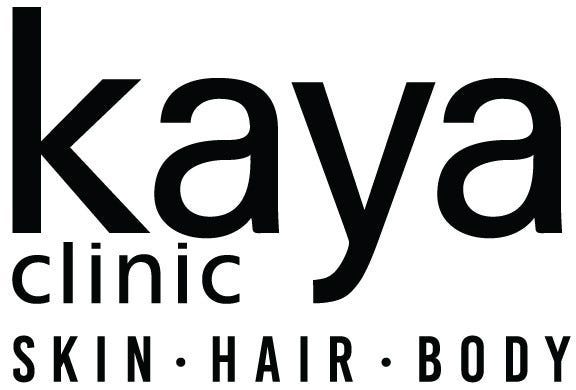Anti-Ageing Treatments | Forum
Kaya Skin Clinic Support Forum
Support Forum
Anti-Ageing Treatments | Forum
|
Are there any risks associated with combining multiple anti-aging treatments?
Yes, combining multiple anti-aging treatments can be effective, but it also comes with risks if not done correctly. Here are some important things to consider:
How to Safely Combine Treatments
30 replies
0
|
|
What should I expect during the recovery period after an anti-aging procedure?
The recovery period after an anti-aging procedure depends on the type of treatment you get. Some treatments have minimal downtime, while others may require a few weeks of healing. Here’s what you can expect: Common Side Effects
Recovery Timeline (Varies by Treatment)
Aftercare Tips for Faster Healing
Healing time varies, but patience and proper care will ensure the best results.
30 replies
0
|
|
How do I choose the right anti-aging treatment for my skin type?
Choosing the best anti-aging treatment depends on your skin type, concerns, and sensitivity level. Here’s how to find the right one for you: For Dry Skin
For Oily/Acne-Prone Skin
For Sensitive Skin
For Combination Skin
For Mature Skin
General Tips for Choosing the Right Treatment
30 replies
0
|
|
What are the potential side effects of common anti-aging treatments?
While anti-aging treatments can improve skin texture, firmness, and overall appearance, they may also come with potential side effects. Understanding these risks helps in making informed decisions. Below are the most common treatments and their associated side effects:
Precautionary Measures
While side effects are usually temporary, understanding the risks ensures safer and more effective results.
30 replies
0
|
|
What is the effectiveness of ultrasound therapy in skin tightening?
Ultrasound therapy, such as Ultherapy and High-Intensity Focused Ultrasound (HIFU), is a non-invasive skin tightening treatment that stimulates collagen production for firmer, more youthful-looking skin. Here’s how effective it is: How Ultrasound Therapy Works
Effectiveness and Benefits
Limitations & Considerations
Who is a Good Candidate?
30 replies
0
|
|
Can platelet-rich plasma (PRP) treatments rejuvenate aging skin?
Yes, PRP (Platelet-Rich Plasma) treatments are known for their skin rejuvenation benefits. They use the body’s own platelets to promote healing, boost collagen production, and improve overall skin texture. How PRP Helps in Skin Rejuvenation
How PRP Treatment is Done
Who Can Benefit from PRP?
Things to Consider
Conclusion PRP treatments can effectively rejuvenate aging skin by stimulating collagen, improving hydration, and enhancing overall skin quality. It is a safe and natural option for those looking to achieve youthful, glowing skin with minimal downtime.
30 replies
0
|
|
What are stem cell therapies, and are they effective for anti-aging?
Stem cell therapy is an advanced regenerative treatment that uses stem cells to repair, regenerate, and rejuvenate aging tissues, including the skin. It is gaining popularity as a potential anti-aging solution. What Are Stem Cell Therapies?
How Stem Cell Therapy Works for Anti-Aging
Effectiveness of Stem Cell Therapy for Anti-Aging
Who Can Benefit from Stem Cell Therapy?
Things to Consider
Conclusion Stem cell therapy shows promising potential for anti-aging by stimulating skin regeneration and collagen production. While results may not be immediate, it is considered a natural and innovative approach to maintaining youthful skin. However, more research is needed to establish its long-term effectiveness.
30 replies
0
|
|
How does radiofrequency skin tightening work for anti-aging?
Radiofrequency (RF) skin tightening is a non-invasive cosmetic procedure that uses heat energy to stimulate collagen production and improve skin elasticity. It is commonly used to reduce wrinkles, sagging, and fine lines, making it a popular anti-aging treatment. How Radiofrequency Skin Tightening Works
Benefits of RF Skin Tightening for Anti-Aging
Who Can Benefit from RF Skin Tightening?
Things to Consider
Conclusion Radiofrequency skin tightening is a safe and effective way to combat signs of aging by stimulating collagen and improving skin elasticity. It offers gradual, natural-looking results with minimal downtime, making it a great option for non-surgical skin rejuvenation.
30 replies
0
|
|
What is the latest technology in anti-aging treatments?
Advancements in aesthetic and regenerative medicine have introduced cutting-edge anti-aging treatments that provide more effective and longer-lasting results. These technologies focus on stimulating collagen, repairing skin damage, and enhancing overall skin health without invasive surgery.
Conclusion Modern anti-aging technologies offer innovative, non-invasive, and long-lasting solutions to combat skin aging. From regenerative therapies like PRP and stem cells to advanced devices such as RF microneedling and HIFU, these treatments provide safer and more effective alternatives to traditional cosmetic procedures. Consulting a dermatologist or aesthetic specialist is essential to determine the best option for individual skin concerns.
30 replies
0
|
|
How does stress affect aging, and what are effective stress management techniques?
Chronic stress accelerates the aging process by affecting the body’s hormones, immune system, and cellular functions. It contributes to premature wrinkles, dull skin, hair loss, and various health issues. Managing stress effectively can slow down aging and improve overall well-being. How Stress Affects Aging
Effective Stress Management Techniques
Conclusion Stress is a major contributor to premature aging, but adopting healthy habits can significantly slow down its effects. A combination of mindfulness, proper nutrition, physical activity, and self-care can help manage stress effectively and maintain youthful, healthy skin.
30 replies
0
|




